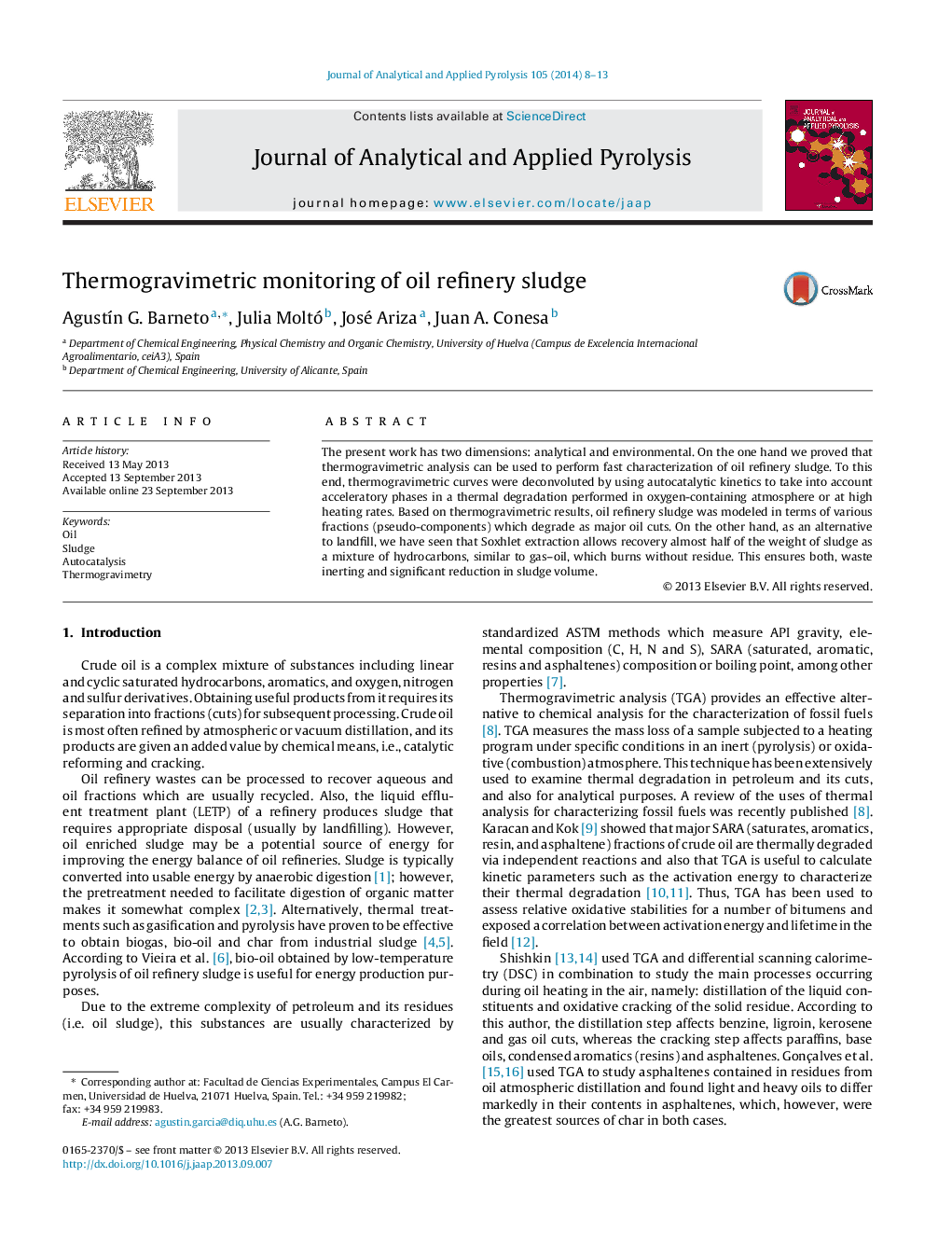| Article ID | Journal | Published Year | Pages | File Type |
|---|---|---|---|---|
| 1198347 | Journal of Analytical and Applied Pyrolysis | 2014 | 6 Pages |
•Thermogravimetric analysis allows fast monitoring of oil refinery sludge.•Thermal degradation of sludge must be fitted using autocatalytic kinetic model.•Thermogravimetry can replace chemical analysis to determine main sludge components.•Extractives obtained from refinery sludge are basically gas–oil cut, useful as fuel.
The present work has two dimensions: analytical and environmental. On the one hand we proved that thermogravimetric analysis can be used to perform fast characterization of oil refinery sludge. To this end, thermogravimetric curves were deconvoluted by using autocatalytic kinetics to take into account acceleratory phases in a thermal degradation performed in oxygen-containing atmosphere or at high heating rates. Based on thermogravimetric results, oil refinery sludge was modeled in terms of various fractions (pseudo-components) which degrade as major oil cuts. On the other hand, as an alternative to landfill, we have seen that Soxhlet extraction allows recovery almost half of the weight of sludge as a mixture of hydrocarbons, similar to gas–oil, which burns without residue. This ensures both, waste inerting and significant reduction in sludge volume.
